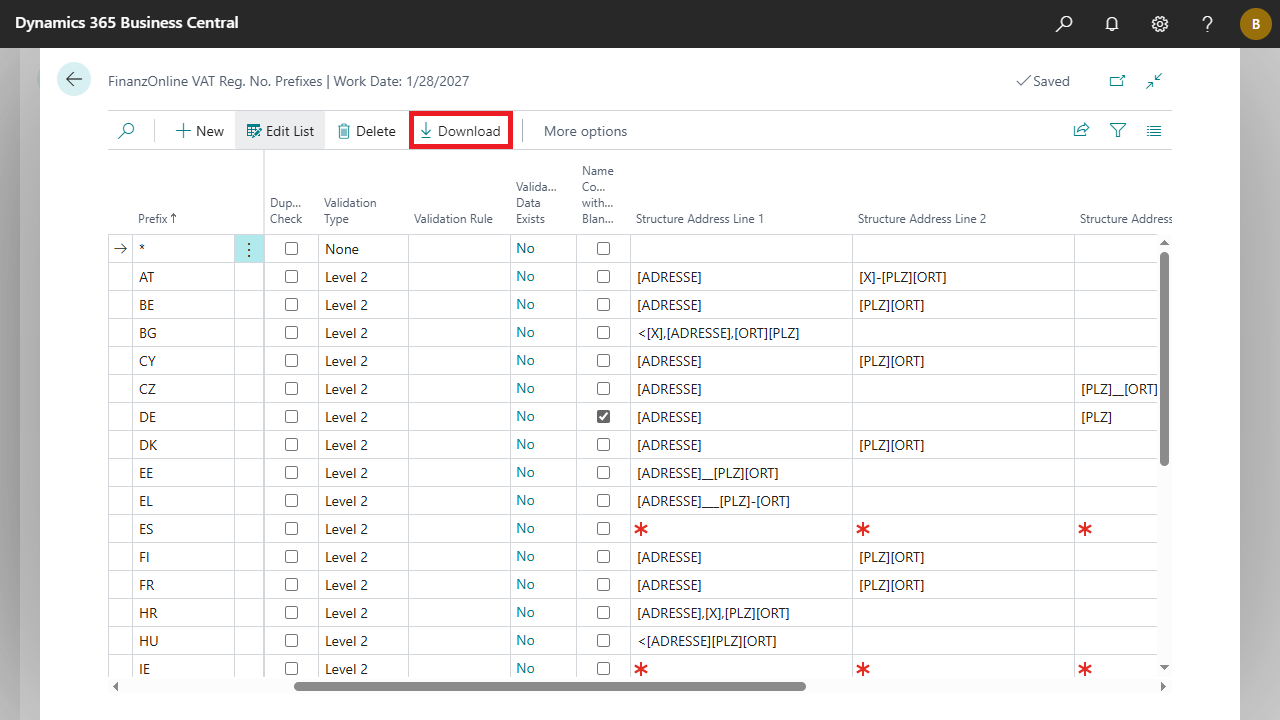

 VAT Reg. No. Prefixes
VAT Reg. No. Prefixes


| Prefix | Specifies the two-digit prefix with which the VAT Reg. No. starts. When entering a VAT Registration No., the prefix for the number must exist.
If you also enter numbers in the VAT Registration No. field of your master data for which no validation should be done resp. which are not part of the validation, you have two possibilities:
 |
| Country/ Region Code | Specifies the country to which the prefix belongs. |
| Country/ Region Name | Specifies the name of the Country/Region Code. |
| Duplicate Check | Specifies whether a duplicate check should be made when the VAT Reg. No. is entered. If the VAT Reg. No. is already entered in other records, a note is displayed. |
| Validation Type | Specifies whether and, if so, at which level the validation should be requested from FinanzOnline. The details resp. the address data are only verified at level 2. |
| Validation Rule | Specifies whether a special rule should be used to verify the details resp. the address data during a level 2 validation. For more information, see Setup, Validation Rules. |
| Validation Data Exists | Specifies whether numbers with this prefix have already been validated via FinanzOnline. For more information, see Archive, Validation Data. |
| Name Comparison without Blanks | Specifies whether blanks should be ignored when checking or comparing names with the names returned by FinanzOnline. |

| Placeholder | Function |
|---|---|
| [ADRESSE] | Linked Address Field: Address |
| [ORT] | inked Address Field: City |
| [PLZ] | Linked Address Field: Post Code |
| [X] | Skip data |
| _ | Space as Separator, can be combined, e.g.: '___' = three or more spaces in a row |
| < | Activate reverse search (Automatically set to the first position when selected) |
Technologiestraße 8/EUROPLAZAAT-1120 Wien150 00 PRAHA 5ул. Доспат №43 обл.СОФИЯ, гр.СОФИЯ 1000гр. Гълъбово , Стара Загора обл.СТАРА ЗАГОРА, гр.ГЪЛЪБОВО 6280AT-1120 WienAT-2700 Wiener Neustadt
 | E-Document - ebInterface Create and send e-invoices in accordance with the Austrian standard. More information  |